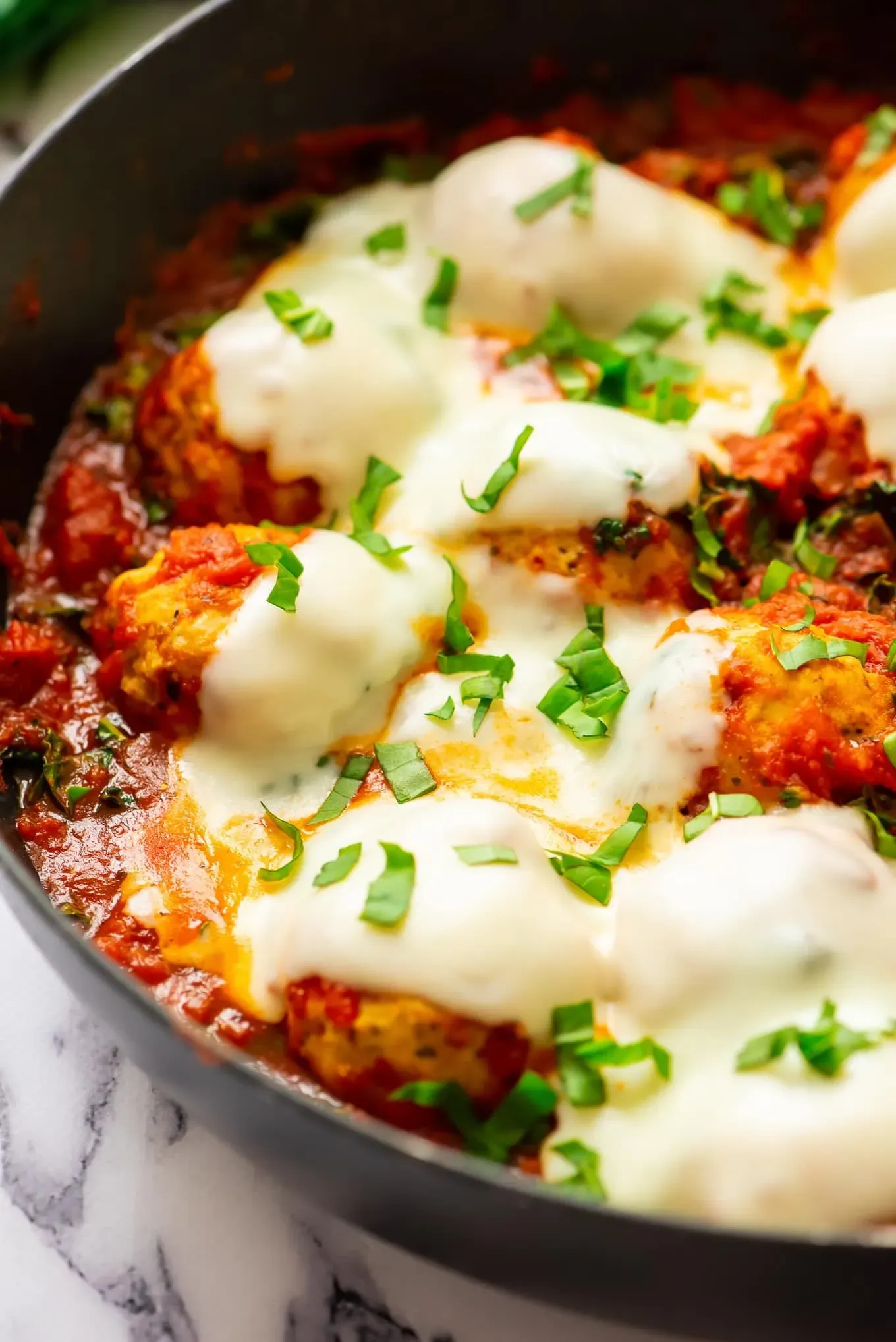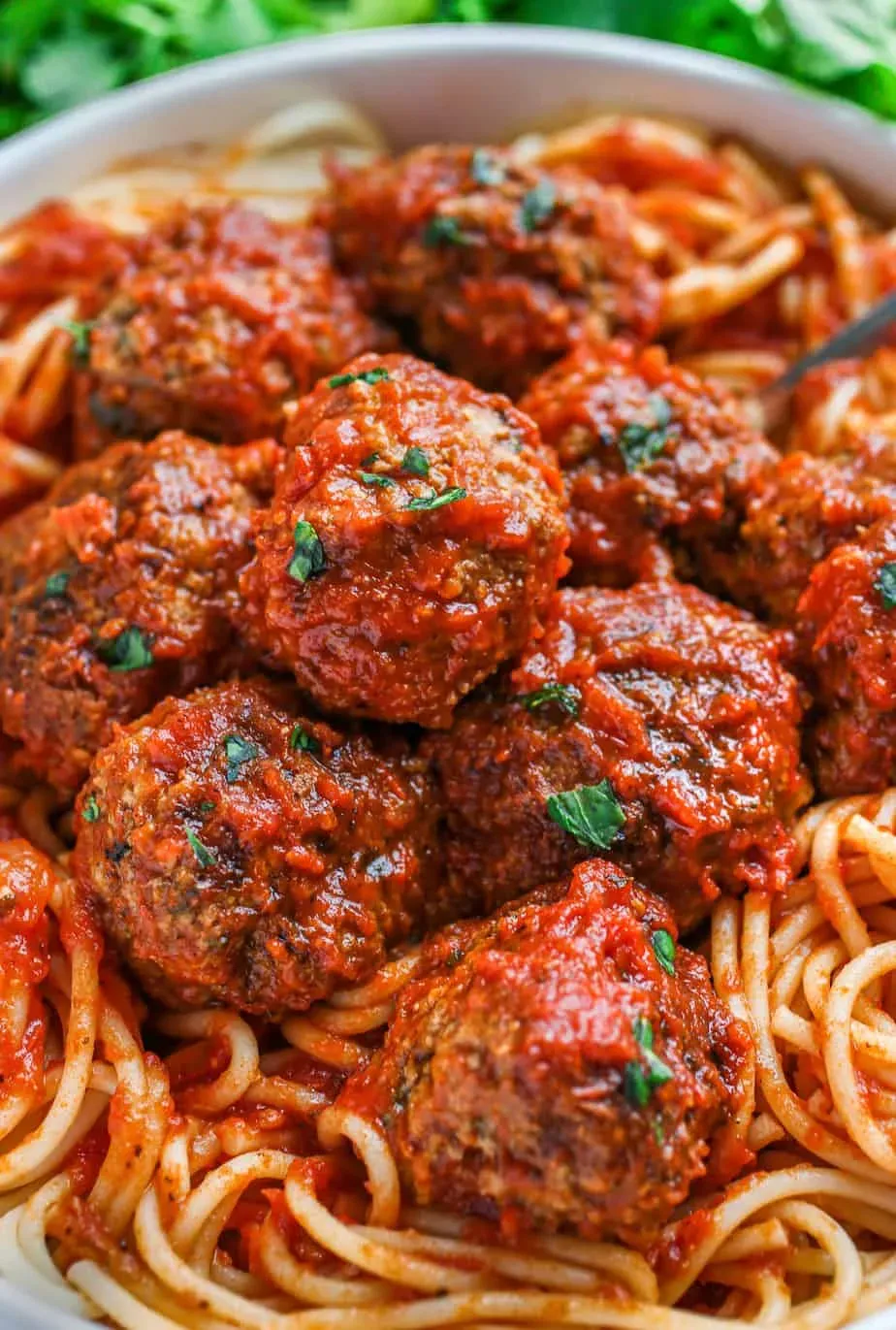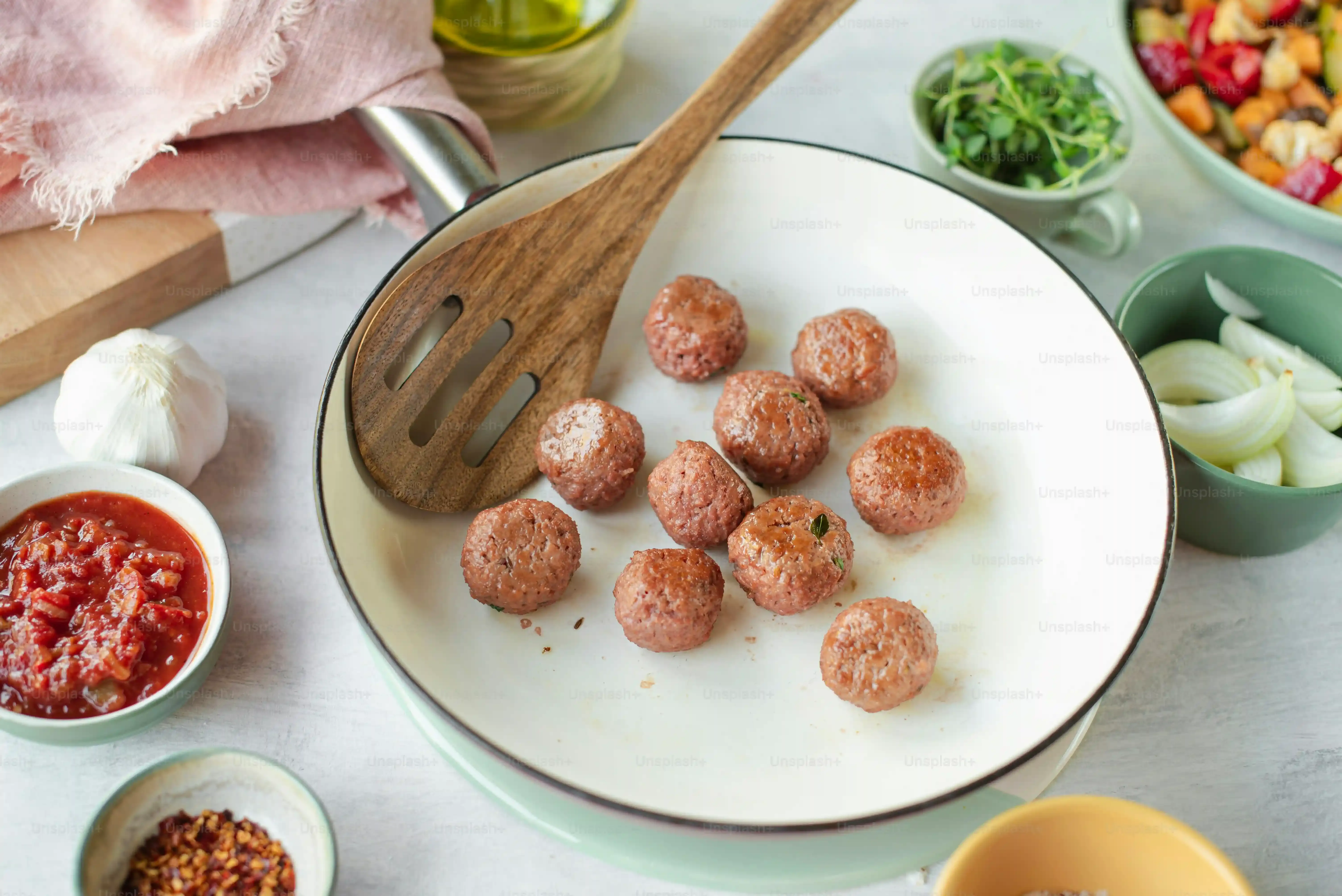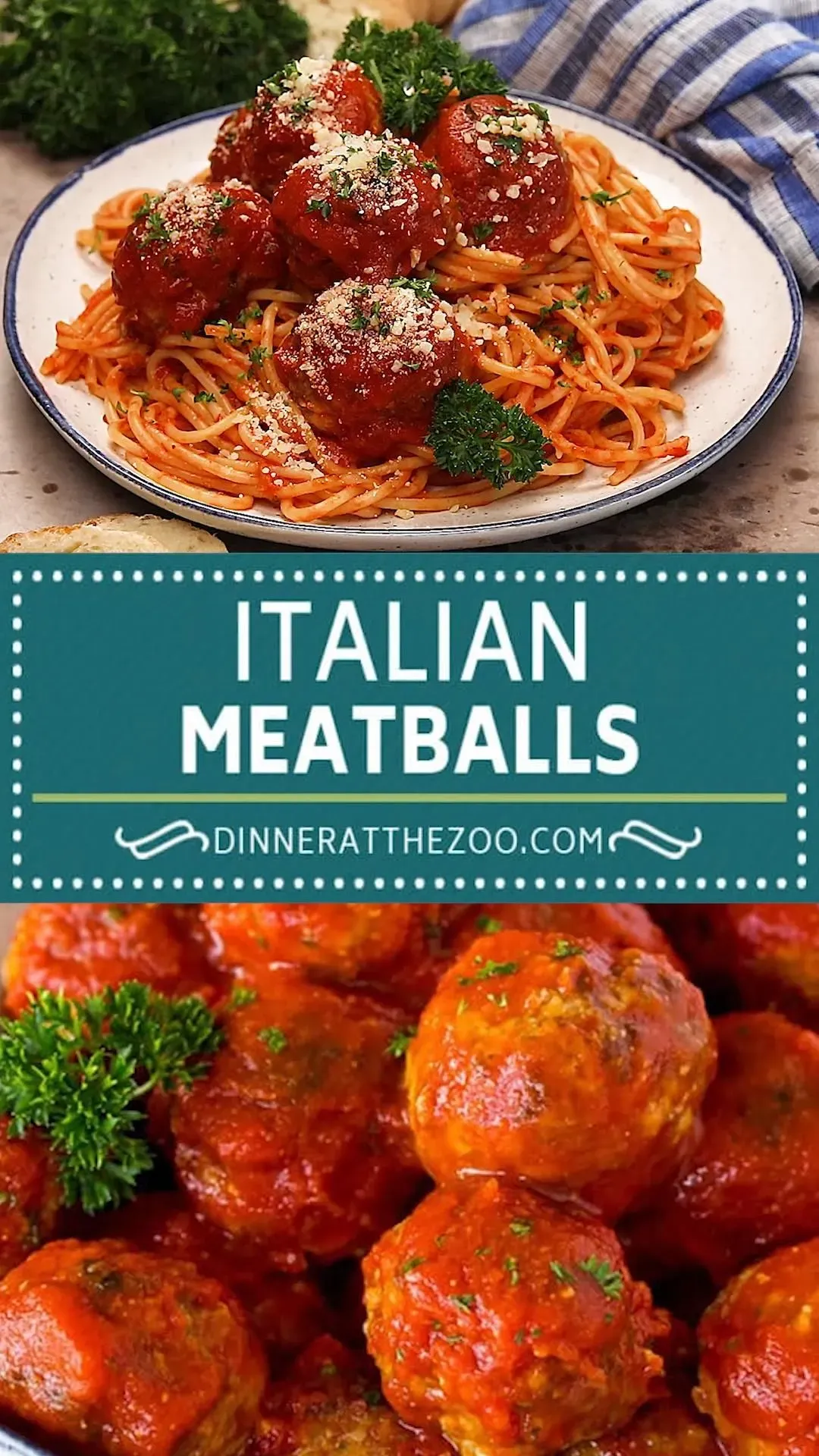Table of Contents
Let's be honest. You've probably tried making meatballs before. Maybe they turned out dry, or maybe they just didn't have that *thing* you remember from grandma's kitchen or that perfect little Italian joint down the street. Finding a truly amazing italian meatball recipe feels like searching for a culinary unicorn sometimes. But what if I told you the secret isn't some obscure ingredient, but a few simple techniques and a little bit of kitchen science? We're not talking about rocket surgery here, just smart cooking that yields incredible results.
Why These Are Truly Amazing Italian Meatballs

Why These Are Truly Amazing Italian Meatballs
so you want to know what separates a "good" meatball from a truly amazing Italian meatball recipe? It's not just throwing some ground meat in a bowl and hoping for the best. It's about texture, flavor, and that incredible tenderness that makes you close your eyes when you take a bite. We're aiming for meatballs that are light, moist, and practically melt in your mouth, not dense, rubbery golf balls. This recipe achieves that through a few key steps that build flavor and ensure maximum juiciness from the inside out. Think of it as building a flavor bomb that happens to be spherical.
The Magic Behind Juicy, Tender Meatballs

The Magic Behind Juicy, Tender Meatballs
The Panade: Your Secret Weapon Against Dryness
so you want the real scoop on why some meatballs are heavenly and others are hockey pucks? It starts with something called a "panade." Sounds fancy, right? It's just a mixture of bread and liquid – usually milk or water – that you mix into the meat. Think of it like adding little sponges to your meatball mix. As the meatballs cook, these bread sponges soak up and hold onto the juices that would otherwise just cook away. No panade, no moisture. Simple as that. This is the absolute baseline for avoiding dry, dense meatballs. It's non-negotiable if you want that melt-in-your-mouth texture.
The Meat Blend and Fat Content
Next up, the meat itself. Using just lean ground beef is a rookie mistake if tenderness is your goal. You need fat. Fat adds flavor, sure, but it also contributes significantly to that juicy texture. A classic blend is ground beef and ground pork. The pork brings extra fat and a slightly different flavor profile that complements the beef perfectly. Aim for a mix that has some decent fat content, maybe an 80/20 blend for the beef. Don't be scared of a little fat; it's where the magic happens. This combination gives you the best of both worlds: robust beef flavor and the tenderness pork fat provides.
Why the Panade Matters:
- Traps meat juices, preventing dryness.
- Creates a lighter, more tender texture.
- Helps bind ingredients without overmixing.
- Allows meatballs to hold their shape better during cooking.
Cooking Method: The One-Two Punch
Finally, the cooking method seals the deal. You don't just plop these beauties straight into sauce. We give them a quick trip under the broiler first. Why? Two reasons. First, it helps them hold their shape before they hit the liquid. Second, and more importantly, it kicks off the Maillard reaction on the surface. That's the fancy term for the browning process that creates complex, savory flavors. You get that lovely browned crust. THEN, you transfer them to simmer gently in your tomato sauce. The low, slow simmer finishes cooking them through while they absorb the flavors of the sauce, becoming incredibly tender. It's a two-step process that yields exponentially better results than just boiling them in gravy.
Making Your Own Amazing Italian Meatball Recipe: StepbyStep

Making Your Own Amazing Italian Meatball Recipe: StepbyStep
Getting Your Hands Dirty: The Mixing Process
Alright, let's get down to the actual making of this amazing italian meatball recipe. First things first, grab a big bowl. You're going to need space to work without making a colossal mess. Combine your ground meats – remember that beef and pork blend we talked about? Add your soaked bread panade, the grated Parmesan cheese, finely minced onion and garlic, chopped fresh parsley, maybe a pinch of red pepper flakes if you like a little warmth, and of course, salt and pepper. Don't forget the egg; it's another binder that helps everything stick together nicely. Now, the crucial part: mixing. You want to mix just until everything is combined. Overmixing is the enemy of tender meatballs. It develops the proteins too much, leading to that tough, rubbery texture nobody wants. Use your hands – gently! Think of it like folding, not kneading bread dough.
Forming and Broiling for That Perfect Start
Once your mixture is just combined, it's time to form the meatballs. Grab a scoop – an ice cream scoop works perfectly for consistent sizing – or just eyeball it if you're feeling confident. Aim for meatballs roughly 1.5 to 2 inches in diameter. Roll them gently between your palms to form a nice sphere. Don't pack them too tightly. Place these beauties on a baking sheet lined with parchment paper. Give them a little space so they brown evenly. Pop that baking sheet under a preheated broiler for a few minutes, maybe 3-5 minutes per side, until they're nicely browned all over. This isn't about cooking them through; it's about building flavor and giving them structural integrity before they hit the sauce. You'll see that beautiful crust forming – that's the Maillard reaction working its magic.
Mixing Tips for Tender Meatballs:
- Use a light touch; avoid overmixing.
- Ensure ingredients are evenly distributed.
- Don't skip the panade – it's essential for moisture.
- Mix just until combined, no longer.
- Cold hands help prevent the meat from getting sticky.
Serving Your Amazing Italian Meatballs (Beyond Spaghetti)

Serving Your Amazing Italian Meatballs (Beyond Spaghetti)
More Than Just Sauce and Strands
so you've mastered the amazing italian meatball recipe. They're simmering away, smelling incredible, and you're picturing that classic plate of spaghetti. And look, there's nothing wrong with spaghetti and meatballs. It's a classic for a reason. But limiting these beauties to just pasta is like buying a sports car and only driving it to the grocery store. These meatballs are versatile. Think about building a killer meatball sub on a crusty roll, piled high with sauce and maybe some melted provolone. Or serving them over creamy polenta – that's a seriously comforting and elegant move. It absorbs the sauce beautifully and provides a lovely contrast to the tender meatball.
Getting Creative with Leftovers (If There Are Any)
If, by some miracle, you have any of these amazing italian meatballs left over, the possibilities don't end there. Chop them up and add them to a hearty minestrone soup. Slice them and layer them on a pizza with some extra sauce and cheese. You could even mash one up slightly and tuck it into a grilled cheese sandwich for a ridiculously decadent lunch. Don't feel bound by tradition. These meatballs are robust enough to stand up to different flavors and textures, making them a fantastic base for all sorts of delicious meals throughout the week.
Meatball Serving Ideas (Beyond the Obvious):
- Classic Meatball Subs (toasted roll, sauce, cheese)
- Over Creamy Polenta
- With Gnocchi or Rigatoni (for a different pasta shape)
- As Sliders on small buns
- Chopped and added to Soup (like minestrone)
- Sliced and used as a Pizza Topping
- In a baked Ziti or Lasagna
Storing, Reheating, and Common Meatball Questions

Storing, Reheating, and Common Meatball Questions
Keeping Your Amazing Italian Meatballs Fresh
So you've made a glorious batch of these amazing italian meatball recipe wonders, and somehow, against all odds, you have leftovers. First off, congratulations on your self-restraint. Now, let's make sure they stay just as delicious as they were the first time around. The key here is getting them into the fridge quickly once they've cooled down a bit. Don't leave them sitting on the counter for hours – you're just inviting trouble. An airtight container is your best friend here. If they're already in sauce, store them together. The sauce actually helps keep them moist. They'll hang out happily in the refrigerator for about 3-4 days.
Thinking long-term? These meatballs freeze beautifully. You can freeze them cooked, either in sauce or without. If freezing without sauce, flash freeze them first on a baking sheet until solid, then transfer to a freezer bag or container. This prevents them from sticking together in one giant meatball clump. If freezing in sauce, just portion the meatballs and sauce into freezer-safe containers or bags. Thaw them overnight in the fridge before reheating.
- Refrigerate within two hours of cooking.
- Use airtight containers.
- Store in sauce for extra moisture.
- Cooked meatballs last 3-4 days in the fridge.
- Freeze cooked meatballs (with or without sauce) for up to 3 months.
- Flash freeze individual meatballs if storing without sauce.
Bringing Them Back to Life: Reheating Tips and FAQs
Now for the resurrection. Nobody wants a dry, sad reheated meatball. The best way to reheat your amazing italian meatball recipe leftovers is gently, preferably in the sauce they were stored in. A small saucepan on the stovetop over low heat works perfectly. Just let them simmer gently until heated through. This allows them to warm up slowly and reabsorb some of that flavorful sauce. Avoid the microwave if you can, unless you're really in a hurry and don't mind potentially sacrificing a bit of that tender texture – microwaves can heat unevenly and dry them out.
What about common questions? Can you make the mixture ahead of time? Absolutely. You can mix the meatball ingredients, form the balls, and store them raw in the fridge for up to 24 hours before cooking. Can you bake them instead of broiling/simmering? Yes, you can bake them at around 375°F (190°C) until cooked through, then add them to sauce to finish. But seriously, try the broil-then-simmer method at least once; it really does make a difference in flavor and texture. Don't overthink it too much; they're meatballs, not a soufflé. Just handle them gently and reheat slowly.
Reheating Method | Pros | Cons |
|---|---|---|
Stovetop in Sauce | Best for tenderness and flavor; heats evenly. | Takes a little longer; requires a pan. |
Oven in Sauce (covered) | Good for larger batches; heats evenly. | Takes longer than stovetop; requires oven preheating. |
Microwave | Fastest method. | Can cause dryness and uneven heating; texture may suffer. |
Your Meatball Mission Accomplished
So there you have it. No magic spells, no secret society handshake required. Just a solid approach to combining ingredients and applying heat. Following these steps means you've moved beyond the realm of "okay" meatballs and landed squarely in "holy cow, these are good" territory. An amazing italian meatball recipe isn't about chasing some mythical ideal; it's about understanding how simple elements work together to deliver flavor and texture. Now go forth and prove that making truly great meatballs is less about luck and more about knowing what you're doing.